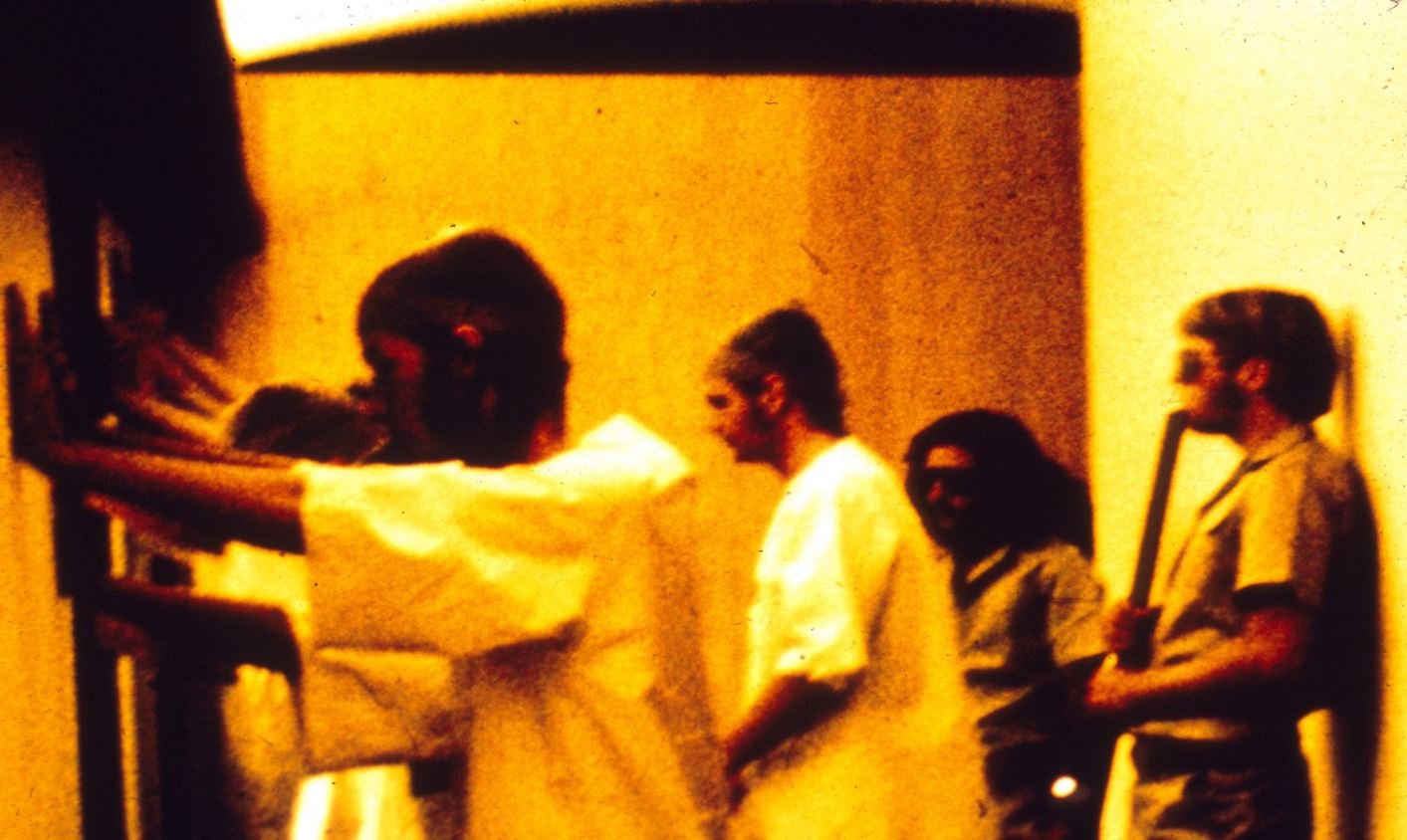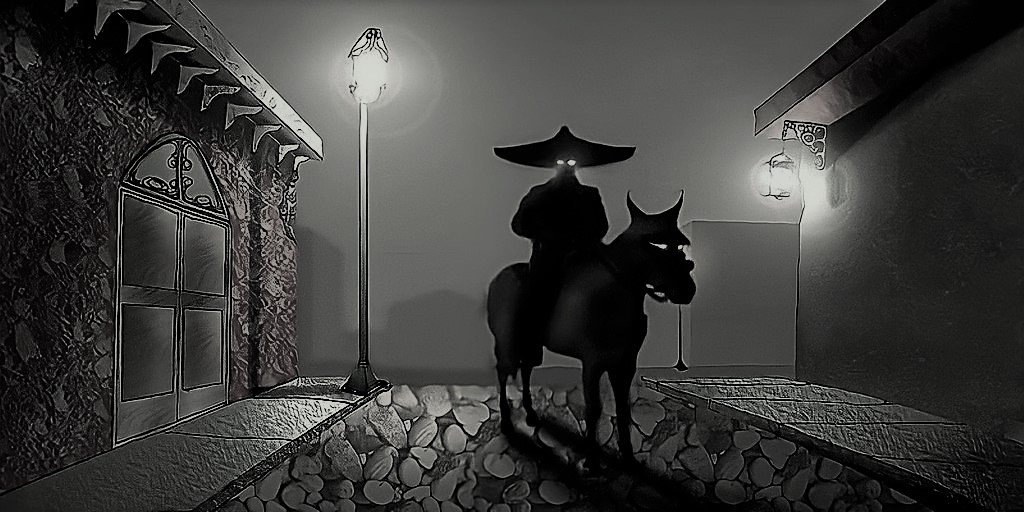The Stanford Prison Experiment
Say you’re an eager college student in California looking to learn about the complexity of the human mind. You can’t wait to be part of, or help lead, an experiment that really dives deep into how our environment and what we wear affect us.
Walking through campus you see a sign for an experiment that matches you’re somewhat specific needs and you sign up for it without a second thought.
Before you know it you’re in a makeshift prison cell in the basement of a school wearing a smock and nylon cap with a heavy chain around your ankle. Guards, who used to be your fellow students are now parading around in uniforms with wooden batons. They no longer refer to you by your name, you're just a number now.
This was the Stanford prison experiment
“Hold on just one second….”
Philip Zimbardo’s Experiment
In 1971 psychology professor Philip Zimbardo decided to lead a research group to conduct an experiment on the power of roles and individuation among other things.
The experiment was funded and approved by the U.S. Office of Naval Research, and we all know the government has never been involved in a psychological experiment that went wrong or negatively affected its participants…
Cough… cough…
The plan was for a two-week experiment that consisted of 24 college students, 9 guards, and 9 prisoners with 3 standbys for each group. Luckily for Zimbardo, there was plenty of interest with over 70 students applying. After testing and interviewing the students to weed out any who had psychological problems, medical disabilities, or a history of crime and drug abuse, Zimbardo had his 24.
Now you’re probably wondering what scientific method Zimbardo used to determine who became a guard and who became a prisoner. Was it based on their evaluations or maybe based on some other aspect of their backgrounds? Nah, he just flipped a coin.
The Stanford Prison Experiment Begins
When it came time to tell the participants what roles they got, those that became guards were given khaki-colored uniforms and had to wear sunglasses, an idea Zimbardo got from the movie Cool Hand Luke. That’s not a joke, he literally said this.
Meanwhile, those students who were designated prisoners were arrested at their homes. A real Palo Alto police car rolled up, with a real cop, who really arrested the student accusing them of armed robbery and burglary. One student mentions that this happened in front of his neighbors who, of course, had no idea there was an experiment going on.
The students were then taken to a real police station, really fingerprinted, had a real mugshot taken, blindfolded, and made to wait in a real holding cell. At some point, you have to start to wonder when is the fake experiment supposed to start.
“Guys we still doing that experiment?”
Next, the students were taken to the basement of Stanford where a fake prison had been created. They were stripped naked, searched, and sprayed with a cleaning spray. Each were given an ID number, issued a uniform which was just a smock, no underwear or socks, and were given a chain and lock to place around their ankles.
The prisoners were then put into cells, three in each, that were only slightly bigger than the three mattresses they contained. If they had to go to the bathroom, they were blindfolded and led there. If they acted out they were put in solitary confinement for an hour in a room with no light that was two feet wide and two feet deep, meaning prisoners couldn’t lay down or sit.
See, what Zimbardo was trying to do here was humiliate the prisoners and force them to lose their sense of self or individuality, something that can happen in prison over a period of time but Zimbardo didn’t have a long period of time, so he tried to speedrun it.
Guards were instructed to refer to prisoners by only their given ID numbers and while they were told they couldn’t physically hurt the prisoners, they were encouraged to humiliate them and think of punishments for that purpose. Other than that, they were given no other instructions on how to handle the prisoners.
An example of what happens when no instructions are given… yes those are paper bags
The abuse started off light with the guards forcing a lineup where each prisoner had to state their ID number multiple times in the day and the middle of the night. Those who refused or incorrectly stated their number were verbally abused and forced to do pushups as punishment.
A Riot Breaks Out
It only took a day before a riot broke out with prisoners barricading the doors with their mattresses and cursing out the guards. In order to quell the rebellion the guards used fire extinguishers to push the group back into their cells.
They then removed the mattresses and clothes, forcing the prisoners to stay naked in their cells. Those that were believed to have led the revolt were placed in solitary confinement for longer sessions than the agreed-upon hour. Guards were already starting to lose their sense of morality and, for a lack of better words, becoming dicks.
Wearing sunglasses inside was a big hint though
Though the guards were not allowed to physically attack they did intimidate prisoners with the threat of violence with their batons. The guards then decided to begin employing more psychological practices like forcing other prisoners to chant negative remarks about other prisoners.
In an effort to break the solidarity between the prisoners those that had less of a role in the revolt were treated better by being placed in a special cell, given their clothes back, let them wash up, brush their teeth, and even given better meals. When the guards forced prisoners to do pushups they would instruct one of the “good” prisoners to sit on their back.
For those that had a role in the revolt, there was no bathing, no brushing of teeth, meals were denied as well as requests to use the bathroom. Instead, the guards gave the prisoners a bucket to urinate and defecate in that they were forced to keep in their cells.
An Early End
Over the course of the next five days, the guards became more verbally abusive and began to fully encompass their roles, displaying, as Zimbardo put it, “sadistic qualities”. Meanwhile, the prisoners began to break down with many becoming submissive, showing signs of depression, and starting to lose their identities. In one case a priest came into the prison and many prisoners introduced themselves by their numbers instead of their actual names.
Another prisoner began to suffer emotional disturbances, uncontrollable crying, and rage. It’s at this point I should mention that prisoners were told that they could leave the experiment at any time just by saying they wanted out. This prisoner who was having a mental breakdown was denied their request to leave.
The problem was those who were supposed to make the decision to allow him to leave, like Dr. Zimbardo, had taken roles in the experiment themselves. Zimbardo was playing the superintendent of the prison meaning there wasn’t an unbiased viewpoint of what was going on in the experiment. He himself had fallen victim to what he was trying to test.
It wasn’t until a graduate student who was there to conduct interviews vocally objected to what was happening that Zimbardo began to see the error of his ways. The experiment was shut down 6 days after starting as opposed to the planned 14 days.
What the Stanford Prison Experiment Showed
So what did this torture even prove? Well, the experiment touched on a lot of aspects of social psychology but let’s focus on what Zimbardo found.
Zimbardo’s main goal was to find out whether the sadistic behavior of guards in prisons throughout history was due to their environments, or if the guards were predisposed to be violent and authoritarian in the first place.
A few of the guards interviewed after the experiment was shut down, admitted to not realizing they had that side of them. They also claimed to not be fully aware of how brutal they were being. This all led Zimbardo to believe that situational attribution led to what’s called deindividuation of both the prisoners and guards.
Deindividualization in simple terms is mob mentality. In this case, the environment, roles, and uniforms led to both groups losing the traits that made them individuals and their sense of identity. The guards and Zimbardo specifically, lost their personal responsibility and went along with what the rest were doing despite knowing it was wrong.
For the prisoners, part of Zimbardo's experiment was to break down the idea that the prisoners had any control over their situation. This led to the prisoners displaying what’s called learned helplessness.
When an individual suffers or experiences a situation that causes constant stress they begin to believe that they are unable to control or change what is happening to them. As they continue to fall into this trap, they eventually just give up even trying to escape the stressful situation and accept it as an inescapable torture. That is learned helplessness.
Because requests to leave the experiment were first denied, some were eventually allowed to leave after mental breakdowns, many prisoners started to believe they really were in prison. When a student, who was on standby for the prisoner group, entered the experiment in place of one who was allowed to leave the experiment, he was told by other prisoners that they were in a real prison.
Criticisms of the Stanford Prison Experiment
If you’re like me you’re thinking “something good better have come from all of this”, luckily some has. After this experiment, due to the ethical issues it contained, studies now have to go through extensive review by a board before they can be implemented or conducted.
It goes without saying that in the decades since, the Stanford Prison Experiment has been widely criticized. A main criticism that has been levied against the experiment is something called demand characteristics, this is when participants in a study or experiment change their behaviors to what they believe the experimenter is looking for.
In interviews after the experiment several of those students who were playing guards admitted to acting a certain way because they thought that is what Zimbardo wanted. When it comes to experiments where the goal is to observe people, people acting the way they think you want, kind of defeats the whole purpose.
Other criticisms include Zimbardo and other researchers being directly involved in the experiment as opposed to being neutral observers, a small sample size with no control group, and selection bias.
In 2018 in response to many of the criticisms the study received and continued to receive Zimbardo wrote “From the beginning, I have always said it was a demonstration.” he goes on to say,
“I hereby assert that none of these criticisms present any substantial evidence that alters the Stanford Prison Experiment’s main conclusion… The Stanford Prison Experiment serves as a cautionary tale of what might happen to any of us if we underestimate the extent to which the powers of social roles and external pressures can influence our actions.”
And I feel like that statement is like if someone burned down an entire forest to prove that fires are bad. We know fires are bad, we learned nothing new from burning down the forest.
Quick Facts
Zimbardo had a real Catholic priest visit the prison and was surprised when the priest who was aware this was an experiment, treated the students like they were actually in prison. This led to further blurring the line in the student's minds of whether they were actually in prison
Zimbardo allowed parents to come to visit the students on a specific day but before their arrival he had the prisoners clean up, gave them a big meal, and had music playing for them to enjoy
















